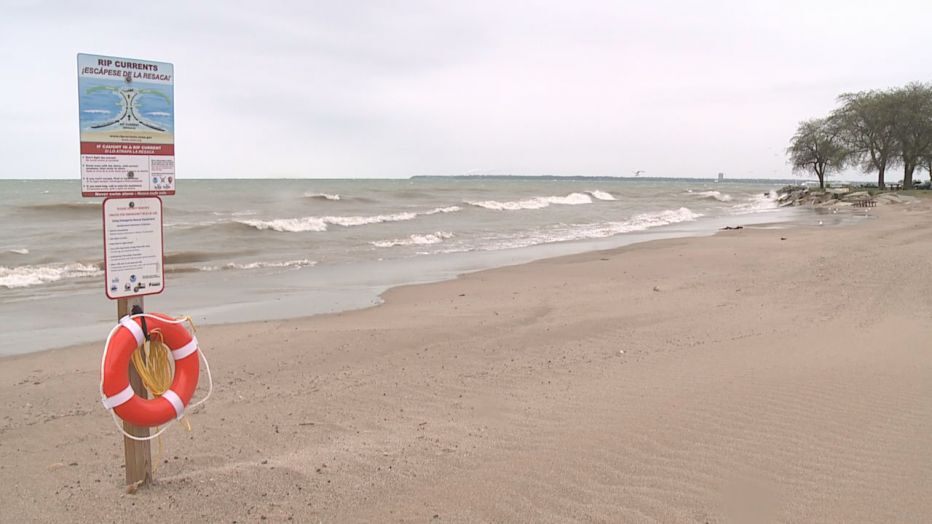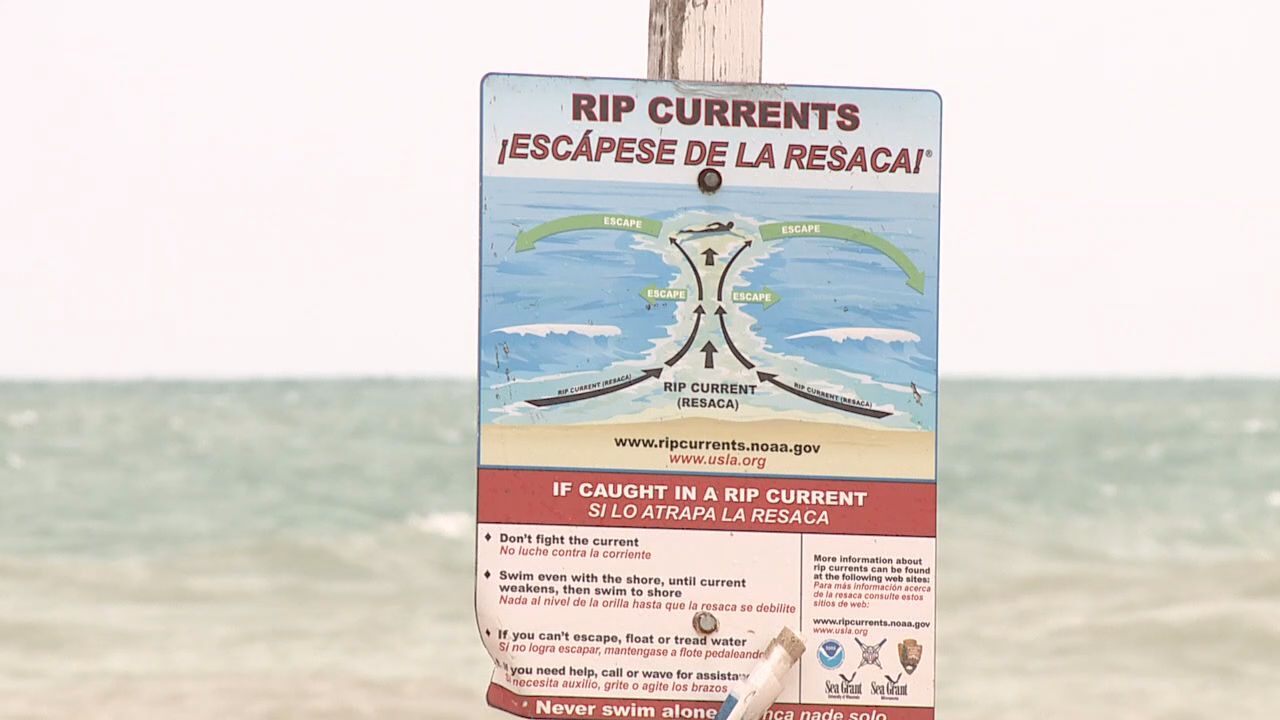MILWAUKEE – The National Weather Service has a new tool for accurately predicting rip currents. It could be a gamechanger in saving lives, especially after what has been a deadly year on the Great Lakes.
Milwaukee County is spending $80,000 to study McKinley Beach after several people drowned while swimming in the waters there last summer.
There is hope that the new technology, when it reaches the Great Lakes, will help prevent deaths. However, experts say being safe at the beach actually begins before you get there.
FREE DOWNLOAD: Get breaking news alerts in the FOX6 News app for iOS or Android.
Between choppy waves and near-freezing wind chills at the end of May in Wisconsin, Marc Kavinsky, a lead forecaster at the Milwaukee NWS office, said this is where analyzing data along the lakefront can save lives – especially from rip currents, as demonstrated where green dye in the water flows away from shore.
“It’s very windy out there. Waves are supposed to get up to seven to 10 feet, really not good conditions for swimming,” Kavinsky said.
Analyzing wind, water and waves, a new NWS model is helping predict the currents on U.S. coasts. For the Great Lakes, Kavinsky hopes it will assess more than just rip currents.
“As the water is moving along the shore, it intersects with a break wall or pier. And it gets forced along that break wall or pier, and forced out into the open waters of the lake,” said Kavinsky.
Kavinsky describes structural currents, which are more common along Milwaukee’s lakefront than rip currents. As Ozaukee County Emergency Management’s Scott Ziegler notes, they are deceptive and dangerous.

“Those currents can occur, and you would have no visual cue on the surface that they’re there,” Ziegler said.
Ahead of the unofficial start to summer, even though the weather may say otherwise, both experts stress preparing before you get to the beach – checking the forecast or warning systems to protect yourself from currents.
“You want to keep beachgoers safe,” said Kavinsky.
On average, there are 12 deaths and 23 rescues on the Great Lakes each year related to currents. In 2020, NWS data shows 28 death and 58 rescues, prompting the safety warnings.
Wild weather in southeastern Wisconsin
High winds and unseasonably cool temps Thursday.















